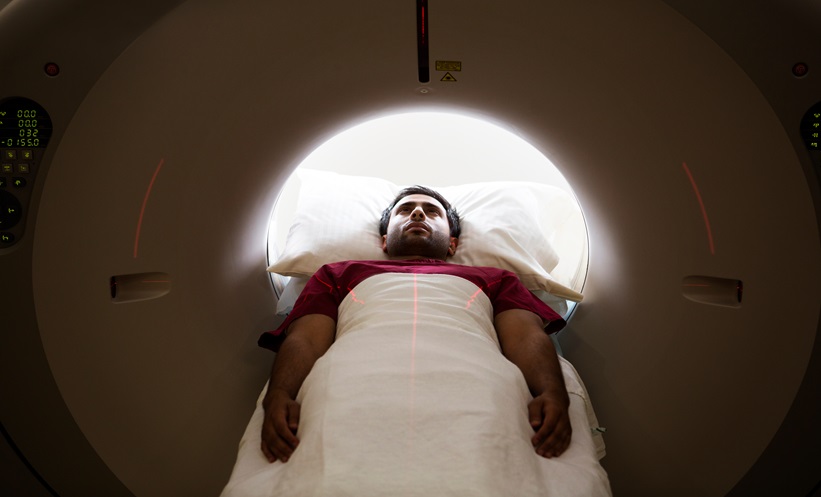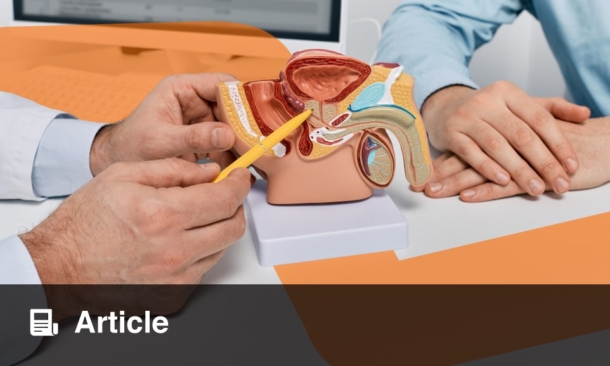THIS YEAR, the vibrant French capital provided the backdrop for Europe’s biggest urological event, with over 10,000 attendees travelling to Paris for the 39th European Association of Urology (EAU) Congress. Featuring talks by nearly 1,000 speakers from 124 countries, EAU24 offered a packed 4-day programme, with live surgeries, state-of-the-art lectures, and insightful case discussions and debates on cutting-edge science.
The EAU Secretary General, Arnulf Stenzl, extended a warm welcome to all congress attendees in the opening ceremony, which featured a dazzling performance by the Parisian cabaret dance show. He began by highlighting the importance of collaboration in urology, acknowledging that the success of EAU would not be possible without teamwork. Stenzl also noted that the time and effort of devoted individuals is equally valuable to the field of urology, and every year, EAU recognises these exceptional personalities with the prestigious EAU Annual Awards.
The award presentations kicked off with the introduction of two new EAU honorary members, Hassan Aboul-Enein, from Mansoura University Urology and Nephrology Center, Egypt; and Jens Rassweiler, from Heidelberg University, Germany. Nicolas Mottet, Centre Hospitalier Universitaire de Saint-Étienne, Saint-Priest-en-Jarez, France, was presented with the EAU Willy Gregoir Medal, for his significant contributions to the development of urology in Europe, and his service to the EAU guidelines. Christopher Chapple, Sheffield Teaching Hospitals, UK, was honoured with the EAU Frans Debruyne Lifetime Achievement Award, for his enduring contributions to the activities and growth of the EAU.
A key focus of the EAU is to acknowledge young urological academic talent, offering the opportunity for young urologists to be seen by the urology community, and rewarded for their work in the field. Giorgio Gandaglia, San Raffaele Hospital, Milan, Italy, received the EAU Crystal Matula Award, a prestigious prize given to a promising urologist aged 40 years or under, who has the potential to become a future leader in European urology. This year, innovation in urology was also celebrated in the opening ceremony, with the EAU Innovators in Urology Award presented to Prokar Dasgupta, King’s College London, UK, a pioneer in robotic surgery, who recently completed his 10,000th robotic procedure.
Further awards were granted to David D’Andrea, Medical University of Vienna, Austria, for the best European paper published on minimally invasive surgery in urology; and Ivo de Vos, Erasmus Medical Center, Rotterdam, the Netherlands, for the best paper published on clinical or experimental studies in prostate cancer. For his outstanding contributions to patient advocacy, Erik Briers, Europa Uomo, Antwerp, Belgium, was awarded the EAU Patient Advocacy Medal of Excellence.
The comprehensive programme of EAU24 reached far beyond Europe, with speakers from Asia, Africa, North and South America, and Australia joining the European experts in 14 ‘Urology Beyond Europe’ sessions, to discuss current challenges, and look ahead into the next decade of urology. Key themes from these joint sessions included the emerging role of artificial intelligence in robotics, advances in kidney stone management, improvement of prostate cancer diagnosis and staging, and novel treatments for urologic cancers. These innovative topics were also reflected in EAU24’s award-winning abstracts. Oliver Wiseman, Addenbrookes Hospital, Cambridge, UK, was awarded first prize in a non-oncology speciality for his abstract on flexible ureterorenoscopy and extracorporeal shockwave lithotripsy for lower pole stones. Colin Belliveau, Centre Hospitalier de l’Université de Montréal, Canada, was given the first prize in oncology abstracts, for his work on PSMA-PET-guided intensification of salvage radiotherapy after radical prostatectomy in a Phase II randomised controlled trial.
Read on for more highlights from EAU24, and come back next year for our coverage of EAU25, which will be held in Madrid, Spain, from the 21st–24th March.
A Targeted Approach to Bladder Cancer Treatment
RECENT findings presented at the 39th EAU Congress in Paris, France, could shift the treatment landscape for bladder cancer towards more effective, targeted therapies.
Results from IMvigor011, a global, double-blind, randomised Phase III trial, revealed that >90% of patients with muscle-invasive bladder cancer (MIBC) who had a negative circulating DNA test following surgery, and remained negative on follow-up for up to 2 years (N=171), did not relapse. These outcomes were irrespective of the stage the tumour was at, or whether it showed elevated levels of PD-L1. “Focusing treatment on those at risk and sparing the very low-risk group potentially life-altering treatment-related side effects is attractive,” stated lead author Thomas Powles, Barts Cancer Institute, Queen Mary University of London, UK.
CheckMate 274, another global, randomised Phase III trial, evaluated the efficacy of nivolumab in high-risk MIBC after surgery. Over 700 patients were included in the study, with half given nivolumab, and half given placebo, every 2 weeks for the 12 months following radical cystectomy. Levels of PD-L1, which is specifically targeted by nivolumab, were also tested for each patient.
Results showed that patients with MIBC on nivolumab had an average of 22 months before recurrence, compared to 10 months for those on placebo. Furthermore, in the PD-L1 group, patients on nivolumab had an average of over 4 years without recurrence, compared to just over 8 months for those on placebo.
Although still at an early stage, the latest findings reveal that patients on nivolumab survive on average for nearly 6 years (69.5 months), compared to just over 4 years (50.1 months) for those on placebo. “Although we already knew that nivolumab improved disease-free survival in muscle-invasive urothelial carcinoma patients who received radical surgery, overall survival is what really matters following local treatment, such as radical surgery. These interim findings, which show that overall survival also improves, are very encouraging, particularly as this hasn’t been the case in other recent immunotherapy trials,” explained Joost Boorman, Erasmus University Medical Centre, Rotterdam, the Netherlands, who chaired the session where both trials were presented. While the team currently does not have enough follow-up data to separate the PD-L1 group, analyses show that overall survival is likely to be even higher for this group.
Prostate Cancer Screening: Longer Intervals Explored
LOW-RISK males can undergo prostate cancer screening every 5 years through a simple blood test, according to a recent study presented at the EAU 2024 Congress in Paris, France. The prostate-specific antigen (PSA) blood test checks the level of PSA, a marker for prostate cancer. The study, conducted in Germany, focused on over 12,500 male participants aged 45–50 enrolled in the ongoing PROBASE trial. This trial aimed to determine effective screening protocols for prostate cancer.
Participants were divided into three groups based on their initial PSA levels. Those with PSA levels under 1.5 ng/mL were considered low-risk and underwent a follow-up test after 5 years. Those with PSA levels between 1.5–3 ng/mL were deemed intermediate risk, and had a follow-up in 2 years, while those with PSA levels over 3 ng/mL were considered high-risk and received an MRI and biopsy.
Over 20,000 male participants were recruited and identified as low-risk; among these, 12,517 retested at age 50, only 1.2% had elevated PSA levels, leading to further MRI and biopsies. Ultimately, only 0.13% of the total cohort were diagnosed with prostate cancer.
Lead researcher Peter Albers, Heinrich Heine University Düsseldorf, Germany, suggests raising the threshold for low-risk from 1 ng/mL to 1.5 ng/mL could allow for longer screening intervals, potentially up to 7, 8, or 10 years, with minimal additional risk. This could have significant implications, given the large number aged between 45–50 in Europe.
Prostate cancer screening has always been a concern because of false positives and false negatives. However, advancements such as MRI scans and active surveillance are changing the landscape, enabling more precise diagnosis and management.
Prostate cancer screening guidelines in Europe are inconsistent and unclear, leading to varied levels of testing, and unequal access to early detection. Katharina Beyer, Erasmus Medical Center Cancer Institute, Rotterdam, the Netherlands, said: “Some countries’ guidelines are actively against screening; others are non-committal; and a few, such as Lithuania, have some form of screening.” This makes access to tests depend on individual requests, disadvantaging the less informed, and highlighting disparities in early diagnosis. Philip Cornford, Liverpool University Hospitals National Health Service (NHS) Trust, UK, and Chair, European Association of Urology (EAU) Prostate Cancer Guidelines Committee, noted similar issues in the UK.
There is a need for more organised prostate cancer screening, and each country must design a screening programme that suits them the best.
Oral Vaccine for Urinary Tract Infection: Potential Alternative To Antibiotics?
FINDINGS from a study conducted at the Royal Berkshire Hospital, Reading, UK, were recently presented at the 39th EAU Congress in Paris, France. Summarising their latest abstract, titled ‘Assessing the long-term efficacy and safety of Uromune® bacterial vaccine in the initial cohort: a 9-year study in the UK for treating recurrent urinary tract infections in men and women’, the team detailed the promising potential of new vaccine, MV140, for recurrent urinary tract infections (UTI).
UTIs are a prevalent bacterial infection affecting both males and females, characterised by abdominal pain, fever, frequent urination, and in some cases, haematuria. The MV140 vaccine was trialled as a treatment option for those suffering with recurrent UTIs. Bob Yang, Royal Berkshire National Health Services (NHS) Foundation Trust, UK, who co-led the research, stated: “Before having the vaccine, all our participants suffered from recurrent UTIs, and for many women, these can be difficult to treat.” Developed by ImmunoTek (Southlake, Texas, USA), MV140 contains four bacterial species in a suspension of water, and is available off-license in 26 countries. The study itself was comprised of 72 females and 17 males, all aged over 18 years, and UTI-free when initially offered the vaccine. It was administered with two sprays of a pineapple-flavoured suspension under the tongue every day for 3 months.
Remarkably, 48% of all participants reported being infection-free during the 9-year follow-up. The average infection-free time across the cohort was 54.7 months (56.7 months for females; 44.3 months for males). Expressing optimism, Yang commented: “This is a very easy vaccine to administer, and could be given by general practitioners as a 3-month course. Many of our participants told us that having the vaccine restored their quality of life. While we’re yet to look at the effect of this vaccine in different patient groups, this follow-up data suggests it could be a game changer for UTI prevention if it’s offered widely, reducing the need for antibiotic treatments.”
Urine Test Proves A Valid Alternative to Painful Cystoscopies
A SIMPLE urine test can reduce the number of cystoscopies necessary in follow-up of patients at high risk of bladder cancer by over half, according to new research presented at the EAU Annual Congress 2024. Cystoscopies are generally safe procedures; however, they cause pain and discomfort, and can lead to urinary infections and bleeding. A study conducted by Thomas Dreyer, Aarhus University Hospital, Denmark, has shown that these procedures could be avoided in a large number of patients.
Dreyer and colleagues recruited 313 patients, half of whom received the standard three cystoscopies per year. The other half were randomised to receive just one cystoscopy per year, with their remaining two follow-up cystoscopies replaced with the Xpert® Bladder Cancer Monitor (Cepheid, Sunnyvale, California, USA) urine biomarker test. This test monitors patients for recurrence of bladder cancer by measuring levels of five target mRNAs, or genetic markers. The researchers chose to trial this particular biomarker test as it had previously shown promising results in patients at high-risk of bladder cancer. Any patients who received a positive result on their urine test were called into the hospital for a cystoscopy to check for evidence of the cancer returning.
After 2 years, only 44% of follow-up appointments involved a cystoscopy amongst the patients primarily receiving the urine test, compared to nearly 100% in those receiving the standard treatment. The team additionally found that the urine test had the potential to pick up cancer recurrence before any disease was visible through the cystoscopy. Many patients had a ‘false positive’ test, in which the urine test was positive but the cystoscopy was clear, of whom more than 50% showed evidence of recurrence at a later visit.
The research team concluded that a urine test can provide an painless alternative to a cystoscopy in many cases, which is preferable for many patients, who dread their follow-up appointments. Other experts in the field are hopeful that this research may change clinical practice going forward, commenting: “This trial shows us a possible means of reducing cystoscopies. If the final results later this year do confirm that the urine test can pick up cancer recurrence as effectively as cystoscopies, then this is something we need to look at introducing into clinical practice as soon as possible, because it reduces demand on our resources and helps to make healthcare more accessible.”
App-Based Therapy Revamps Bladder Emptying Disorders Treatment
COMBINING pelvic floor exercises and behavioural therapy could be more effective than current medical treatments at helping males with frequent urges to urinate, according to initial findings presented at the EAU 2024 Annual Congress. Bladder emptying disorders affect a large proportion of males aged over 50, creating an estimated annual cost of 7 billion EUR across Europe.
Clinical guidelines currently recommend physiotherapy, behavioural therapy, and lifestyle changes; however, due to a lack of evidence, these are often overlooked by clinicians. The bladder emptying disorder therapy trial is the world’s first randomised controlled trial to look at the combination of pelvic floor training, behavioural therapy, and bladder control techniques for mild, moderate, and severe bladder emptying disorders in males; all delivered as a convenient app-based therapeutic.
The 12-week study looked at 237 males aged over 18 years from across Germany. Patients were separated into two randomised groups, with one receiving standard medical care, and the other given access to the Kranus Lutera (Kranus Health, Munich, Germany) app-based therapy alongside standard care. Throughout the study, participants were requested to keep a urination diary, and to complete questionnaires that looked both into the severity of their symptoms and their overall quality of life.
Initial results have revealed that the app-based therapy led to significant improvements in urinary tract symptoms, including hesitancy, straining, frequent urges to urinate, and emptying the bladder effectively. However, the study only compared data of patients experiencing symptoms due to an overactive bladder or an enlarged prostate; other forms of bladder emptying disorder were not compared.
Christian Gratzke, University Hospital Freiburg, Freiburg im Breisgau, Germany, who co-led the trial, said: “Up until now, there has been little data available to back physiotherapy. We’re confident that we now have that data, and making this form of therapy available digitally could be a game changer for the millions of males who struggle day-to-day with issues emptying their bladder.”







